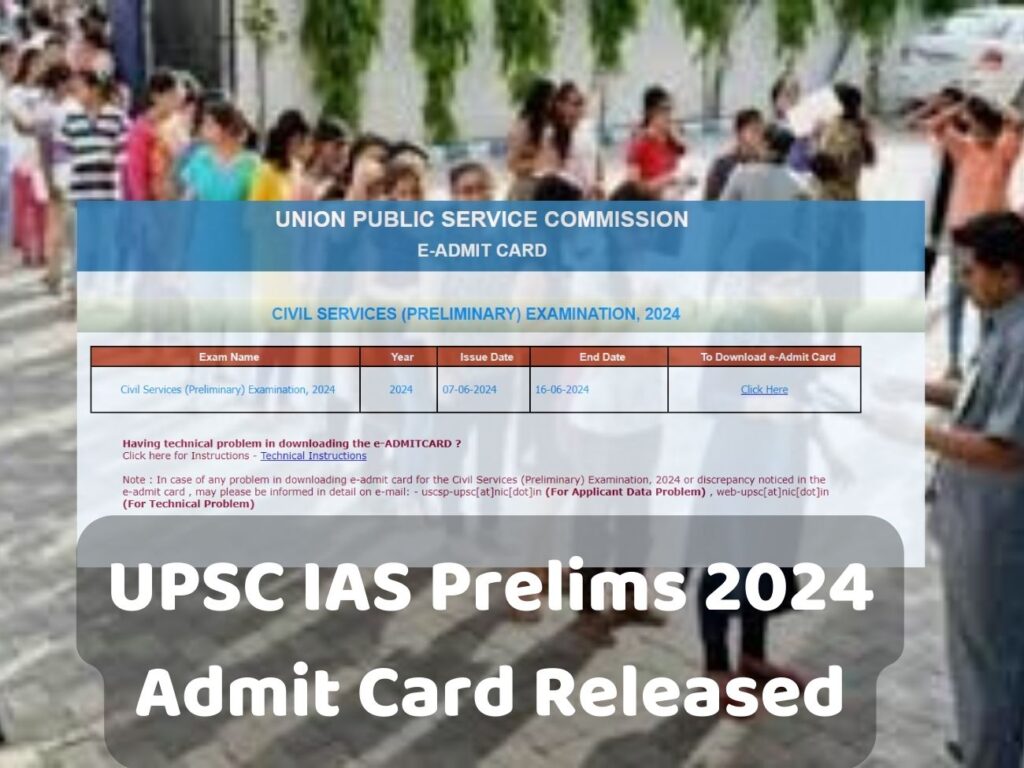यूपीएससी आईएएस प्रारंभिक परीक्षा पैटर्न क्यों बदलता रहता है? why UPSC keeps changing the IAS prelims pattern
Table of Contents (सामग्री की तालिका):
- परिचय (Introduction)
- क्यों UPSC आईएएस प्रारंभिक पैटर्न को बदलता है (Why UPSC Keeps Changing the IAS Prelims Pattern)
- बदलती जरूरतों और वास्तविकताओं के साथ समान्यरूप सुधारना (Adapting to Evolving Needs and Realities)
- रटने को रोकना (Preventing Rote Learning)
- विविधता और समावेश को बढ़ावा देना (Enhancing Diversity and Inclusion)
- वर्तमान मामलों और मूल अवधारणाओं का संतुलन बनाना (Balancing Current Affairs and Core Concepts)
- पूर्वानुमान को कम करना (Reducing Predictability)
- चीटिंग तकनीकों के आगे रहना (Staying Ahead of Cheating Techniques)
- उम्मीदवारों के लिए प्रभाव (Implications for Aspirants)
- व्यापक तैयारी (Broader Preparation)
- अनुकूलनशीलता (Adaptability)
- मूल अवधारणाओं पर जोर (Emphasis on Conceptual Understanding)
- सूचित निर्णय लेना (Informed Decision-Making)
- निष्पक्षता और पारदर्शिता (Fairness and Transparency)
- UPSC IAS प्रारंभिक पैटर्न में बदलाव के बारे में आम सवाल (FAQs about UPSC IAS Prelims Pattern Changes)
- पैटर्न में आये बदलाव का कारण (Frequent Changes in Pattern)
- बदलते पैटर्न के लिए तैयारी की रणनीतियाँ (Preparation Strategies for Changing Patterns)
- पिछले वर्षों के प्रश्न पत्र की प्रासंगिकता (Relevance of Previous Years’ Question Papers)
- कोचिंग संस्थानों की महत्वपूर्णता (Importance of Coaching Institutes)
- मुख्य परीक्षा पर प्रभाव (Indirect Impact on Mains Examination)
- नए पैटर्न में निष्पक्षता कैसे सुनिश्चित की जाती है (Ensuring Fairness in New Patterns)
- निष्कर्ष (Conclusion)
प्रतियोगी परीक्षाओं की दुनिया में यूपीएससी (संघ लोक सेवा आयोग) सिविल सेवा परीक्षा एक महत्वपूर्ण स्थान रखती है। भावी सिविल सेवक बनने का प्रयास करने वाले अभ्यर्थी एक ऐसी यात्रा शुरू करते हैं जो आईएएस प्रारंभिक परीक्षा से शुरू होती है।
पिछले कुछ वर्षों में, यूपीएससी आईएएस प्रारंभिक परीक्षा के पैटर्न में बदलाव का उल्लेखनीय रुझान रहा है। यह लेख उन कारणों पर प्रकाश डालता है कि क्यों यूपीएससी आईएएस प्रारंभिक परीक्षा पैटर्न में बदलाव करता रहता है, इसके ख़ास कारणों पर प्रकाश डालता है और उम्मीदवारों के लिए जानकारी प्रदान करता है।

why UPSC keeps changing the IAS prelims pattern
यूपीएससी आईएएस प्रारंभिक परीक्षा पैटर्न क्यों बदलता रहता है?
यूपीएससी आईएएस प्रारंभिक परीक्षा पैटर्न में कई बदलाव देखे गए हैं, जिससे नए और अनुभवी दोनों उम्मीदवार समान रूप से हैरान हैं। तो, यूपीएससी इस पैटर्न को क्यों बदलता रहता है? इस घटना में योगदान देने वाले कारक यहां दिए गए हैं:
1. उभरती आवश्यकताओं और वास्तविकताओं को अपनाना
सामाजिक, आर्थिक और तकनीकी परिवर्तनों के कारण शासन और प्रशासन की गतिशीलता निरंतर परिवर्तनशील है। यूपीएससी यह सुनिश्चित करने का प्रयास करता है कि परीक्षा आधुनिक समय में प्रभावी सिविल सेवाओं के लिए आवश्यक कौशल और ज्ञान का सच्चा प्रतिबिंब बनी रहे। इस प्रकार, प्रशासनिक क्षेत्र की उभरती जरूरतों और वास्तविकताओं को ध्यान में रखते हुए समय-समय पर परिवर्तन आवश्यक हैं।
2. रटने से रोकना
अतीत में, उम्मीदवार अक्सर अवधारणाओं को समझने के बजाय तथ्यों को रटने का सहारा लेते थे। यूपीएससी के पैटर्न में बदलाव का उद्देश्य विश्लेषणात्मक सोच, समस्या-समाधान और विषयों की गहरी समझ पर जोर देकर इस दृष्टिकोण को हतोत्साहित करना है। यह उम्मीदवारों को विषयों के सार को समझने के लिए प्रोत्साहित करता है, जिससे बेहतर प्रशासनिक कौशल को बढ़ावा मिलता है।
3. विविधता और समावेशन को बढ़ाना
यूपीएससी का लक्ष्य विविध शैक्षणिक पृष्ठभूमि और अनुभव वाले उम्मीदवारों को आकर्षित करना है। पैटर्न में बदलाव करके, आयोग यह सुनिश्चित करता है कि विभिन्न विषयों के उम्मीदवारों को परीक्षा में सफल होने का उचित मौका मिले। यह सर्वांगीण प्रशासकों के सिद्धांत के अनुरूप है जो शासन में विभिन्न दृष्टिकोण ला सकते हैं।

why UPSC keeps changing the IAS prelims pattern
4. करेंट अफेयर्स और मूल अवधारणाओं को संतुलित करना
सिविल सेवाओं के लिए समसामयिक ज्ञान और मूलभूत अवधारणाओं के मिश्रण की आवश्यकता होती है। आईएएस प्रारंभिक परीक्षा पैटर्न को बदलने से यूपीएससी को उम्मीदवारों की वर्तमान मामलों की समझ का परीक्षण करने और मुख्य विषयों पर उनकी पकड़ का आकलन करने के बीच संतुलन बनाने की अनुमति मिलती है। यह संतुलन सर्वांगीण प्रशासक तैयार करने के लिए महत्वपूर्ण है।
5. पूर्वानुमेयता ( Predictability )को कम करना
बार-बार पैटर्न दोहराए जाने से परीक्षा में पूर्वानुमेयता आ सकती है, जिससे उम्मीदवार केवल विशिष्ट क्षेत्रों पर ध्यान केंद्रित कर सकेंगे। विविधताएं पेश करके, यूपीएससी यह सुनिश्चित करता है कि उम्मीदवार व्यापक श्रेणी के प्रश्नों के लिए तैयार हों। इससे परीक्षा प्रक्रिया निष्पक्ष एवं पारदर्शी रहती है।
6.Cheating की तकनीकों से आगे रहना
जैसे-जैसे प्रौद्योगिकी आगे बढ़ती है, धोखाधड़ी और अनैतिक प्रथाओं के नए तरीके सामने आते हैं। यूपीएससी के पैटर्न में बदलाव में नवीन प्रश्न प्रारूप और मूल्यांकन तकनीक शामिल हैं, जिससे उम्मीदवारों के लिए धोखाधड़ी का सहारा लेना कठिन हो जाता है। इससे परीक्षा की शुचिता बनी रहती है।
उम्मीदवारों के लिए ख़ास बातें why UPSC keeps changing the IAS prelims pattern
बदलते यूपीएससी आईएएस प्रारंभिक परीक्षा पैटर्न का उम्मीदवारों पर गहरा प्रभाव पड़ता है:
– व्यापक तैयारी
अभ्यर्थियों को अब केवल तथ्यों को याद करने के बजाय विषयों की व्यापक समझ की आवश्यकता है। इसके लिए समसामयिक घटनाओं, वैचारिक स्पष्टता और विश्लेषणात्मक कौशल को शामिल करते हुए समग्र तैयारी की आवश्यकता होती है।
– अनुकूलता
विकसित हो रहा पैटर्न उम्मीदवारों से अनुकूलनशीलता की मांग करता है। उन्हें नए प्रश्न प्रारूपों से निपटने और तदनुसार अपनी रणनीतियों को समायोजित करने के लिए तैयार रहना चाहिए।
– वैचारिक समझ पर जोर
मूल अवधारणाओं पर ध्यान उम्मीदवारों को विषयों के सार को समझने के लिए मजबूर करता है, जिससे वे प्रशासनिक भूमिकाओं में ज्ञान को प्रभावी ढंग से लागू करने में सक्षम होते हैं।
– सूचित निर्णय लेना
समसामयिक मामलों और मूलभूत अवधारणाओं के प्रति एक संतुलित दृष्टिकोण उम्मीदवारों में सुविज्ञ निर्णय लेने की क्षमता विकसित करता है, जो प्रशासकों के लिए एक महत्वपूर्ण कौशल है।
– निष्पक्षता और पारदर्शिता
पैटर्न बदलने से पूर्वाग्रह और पक्षपात की संभावना कम हो जाती है, जिससे सभी उम्मीदवारों के लिए समान अवसर सुनिश्चित होते हैं।
यूपीएससी आईएएस प्रारंभिक परीक्षा पैटर्न में बदलाव के बारे में अक्सर पूछे जाने वाले प्रश्न
1. यूपीएससी बार-बार आईएएस प्रारंभिक परीक्षा पैटर्न क्यों बदलता है?
यूपीएससी बदलती प्रशासनिक जरूरतों के अनुरूप पैटर्न बदलता है, पूर्वानुमेयता को रोकता है और उम्मीदवारों के बीच विश्लेषणात्मक सोच को बढ़ावा देता है।
2. बदलते पैटर्न के लिए उम्मीदवारों को कैसे तैयारी करनी चाहिए?
नए पैटर्न को प्रभावी ढंग से अपनाने के लिए उम्मीदवारों को समसामयिक मामलों, मुख्य अवधारणाओं और विश्लेषणात्मक कौशल सहित समग्र शिक्षा पर ध्यान केंद्रित करना चाहिए।
3. क्या पिछले वर्षों के प्रश्नपत्र अभी भी प्रासंगिक हो सकते हैं?
हां, पिछले पेपर यूपीएससी द्वारा पूछे जाने वाले प्रश्नों के प्रकार के बारे में जानकारी प्रदान करते हैं और उम्मीदवारों को अध्ययन के मुख्य क्षेत्रों को समझने में मदद करते हैं।
4. क्या बदलते पैटर्न को तोड़ने के लिए कोचिंग संस्थान जरूरी हैं?
जबकि कोचिंग सहायक हो सकती है, स्व-अध्ययन और ए.एस
उभरती हुई यूपीएससी आईएएस प्रारंभिक परीक्षा में सफलता के लिए मजबूत वैचारिक नींव महत्वपूर्ण बनी हुई है।
5. क्या इन बदलावों का असर मुख्य परीक्षा पर भी पड़ेगा?
जबकि परिवर्तन मुख्य रूप से प्रारंभिक परीक्षा पैटर्न में हैं, वे बेहतर वैचारिक समझ को बढ़ावा देकर अप्रत्यक्ष रूप से मुख्य परीक्षा की तैयारी को प्रभावित करते हैं।
6. यूपीएससी नए पैटर्न में निष्पक्षता कैसे सुनिश्चित करता है?
ये बदलाव पूर्वानुमेयता को रोकने, सभी उम्मीदवारों के लिए निष्पक्ष और पारदर्शी परीक्षा प्रक्रिया सुनिश्चित करने के लिए डिज़ाइन किए गए हैं।
निष्कर्ष
यूपीएससी आईएएस प्रारंभिक परीक्षा पैटर्न का विकास सक्षम और अनुकूलनीय प्रशासकों को चुनने के लिए आयोग की प्रतिबद्धता को दर्शाता है जो एक गतिशील समाज की चुनौतियों का समाधान कर सकते हैं। हालाँकि ये परिवर्तन उम्मीदवारों के लिए प्रारंभिक चुनौतियाँ पैदा कर सकते हैं, लेकिन अंततः वे अधिक प्रभावी सिविल सेवकों को तैयार करने में योगदान करते हैं। उम्मीदवारों को इन परिवर्तनों को विकास और तैयारी के अवसरों के रूप में अपनाना चाहिए जो समकालीन शासन की मांगों के अनुरूप हों।
English version why UPSC keeps changing the IAS prelims pattern
- Introduction
- Why UPSC Keeps Changing the IAS Prelims Pattern
- Adapting to Evolving Needs and Realities
- Preventing Rote Learning
- Enhancing Diversity and Inclusion
- Balancing Current Affairs and Core Concepts
- Reducing Predictability
- Staying Ahead of Cheating Techniques
- Implications for Aspirants
- Broader Preparation
- Adaptability
- Emphasis on Conceptual Understanding
- Informed Decision-Making
- Fairness and Transparency
- FAQs about UPSC IAS Prelims Pattern Changes
- Frequent Changes in Pattern
- Preparation Strategies for Changing Patterns
- Relevance of Previous Years’ Question Papers
- Importance of Coaching Institutes
- Indirect Impact on Mains Examination
- Ensuring Fairness in New Patterns
- Conclusion
Why UPSC Keeps Changing the IAS Prelims Pattern: Understanding the Evolution
In the world of competitive exams, the UPSC (Union Public Service Commission) Civil Services Examination holds a significant place. Aspirants striving to become future civil servants embark on a journey that begins with the IAS prelims. Over the years, there has been a noticeable trend of changing patterns in the UPSC IAS prelims exam. This article delves into the reasons behind why UPSC keeps altering the IAS prelims pattern, shedding light on its implications and offering insights for aspirants.

why UPSC keeps changing the IAS prelims pattern
Why UPSC Keeps Changing the IAS Prelims Pattern
The UPSC IAS prelims pattern has seen several transformations, puzzling both newcomers and experienced candidates alike. So, why does UPSC keep changing this pattern? Here are the factors contributing to this phenomenon:
1. Adapting to Evolving Needs and Realities
The dynamics of governance and administration are in constant flux due to social, economic, and technological changes. UPSC strives to ensure that the examination remains a true reflection of the skills and knowledge required for effective civil services in modern times. As such, periodic changes are essential to keep up with the evolving needs and realities of the administrative sphere.
2. Preventing Rote Learning
In the past, candidates often resorted to rote memorization of facts rather than understanding concepts. UPSC’s pattern changes aim to discourage this approach by emphasizing analytical thinking, problem-solving, and a deeper understanding of subjects. This encourages candidates to grasp the essence of topics, fostering better administrative skills.
3. Enhancing Diversity and Inclusion
UPSC aims to attract candidates from diverse academic backgrounds and experiences. By altering the pattern, the commission ensures that candidates from various disciplines have a fair chance at succeeding in the exam. This aligns with the principle of having well-rounded administrators who can bring different perspectives to governance.
4. Balancing Current Affairs and Core Concepts
The civil services require a blend of contemporary knowledge and foundational concepts. Changing the IAS prelims pattern allows UPSC to strike a balance between testing candidates’ understanding of current affairs and assessing their grasp of core subjects. This balance is crucial to producing well-rounded administrators.
5. Reducing Predictability
Repeated patterns can lead to predictability in the exam, enabling candidates to focus solely on specific areas. By introducing variations, UPSC ensures that aspirants are prepared for a wider range of questions. This keeps the examination process fair and transparent.
6. Staying Ahead of Cheating Techniques : why UPSC keeps changing the IAS prelims pattern
As technology advances, new methods of cheating and unethical practices emerge. UPSC’s pattern changes incorporate innovative question formats and assessment techniques, making it harder for candidates to resort to cheating. This maintains the integrity of the examination.
Implications for Aspirants : why UPSC keeps changing the IAS prelims pattern
The changing UPSC IAS prelims pattern has a profound impact on aspirants:
– Broader Preparation
Aspirants now need a comprehensive understanding of topics rather than just memorizing facts. This calls for holistic preparation, encompassing current affairs, conceptual clarity, and analytical skills.
– Adaptability
The evolving pattern demands adaptability from candidates. They must be prepared to tackle new question formats and adjust their strategies accordingly.
– Emphasis on Conceptual Understanding
The focus on core concepts compels aspirants to grasp the essence of subjects, enabling them to apply knowledge effectively in administrative roles.
– Informed Decision-Making
A balanced approach to current affairs and foundational concepts cultivates aspirants’ ability to make well-informed decisions, a critical skill for administrators.
– Fairness and Transparency : why UPSC keeps changing the IAS prelims pattern
Changing patterns reduce the chances of bias and favoritism, ensuring a level playing field for all aspirants.
FAQs about UPSC IAS Prelims Pattern Changes : why UPSC keeps changing the IAS prelims pattern
1. Why does UPSC frequently change the IAS prelims pattern?
UPSC changes the pattern to align with evolving administrative needs, prevent predictability, and promote analytical thinking among candidates.why UPSC keeps changing the IAS prelims pattern
2. How should aspirants prepare for changing patterns?
Aspirants should focus on holistic learning, including current affairs, core concepts, and analytical skills, to adapt effectively to new patterns.
3. Can previous years’ question papers still be relevant?
Yes, previous papers provide insights into the type of questions UPSC asks and help candidates understand the core areas of study.
4. Are coaching institutes necessary to crack the changing pattern?
While coaching can be helpful, self-study and a strong conceptual foundation remain crucial for success in the evolving UPSC IAS prelims exam.
5. Do these changes affect the Mains examination too?
While the changes are primarily in the prelims pattern, they indirectly impact Mains preparation by promoting better conceptual understanding.
6. How does UPSC ensure fairness in new patterns?
The changes are designed to prevent predictability, ensuring a fair and transparent examination process for all aspirants.
Conclusion
The evolution of the UPSC IAS prelims pattern reflects the commission’s commitment to selecting competent and adaptable administrators who can address the challenges of a dynamic society. While these changes may pose initial challenges for aspirants, they ultimately contribute to producing more effective civil servants. Aspirants should embrace these changes as opportunities for growth and preparation that aligns with the demands of contemporary governance. why UPSC keeps changing the IAS prelims pattern
Discover the top 10 YouTube shorts that provide incredible motivation and inspiration for UPSC/IAS aspirants.
Watch these powerful videos to stay focused and driven on your path to success in the UPSC/IAS exams
Mastering UPSC: Top 10 YouTube Shorts Every IAS Aspirant Must Watch
Mastering UPSC: Top 10 YouTube Shorts Every IAS Aspirant Must Watch
Mastering UPSC: Top 10 YouTube Shorts Every IAS Aspirant Must Watch
Mastering UPSC: Top 10 YouTube Shorts Every IAS Aspirant Must Watch
Mastering UPSC: Top 10 YouTube Shorts Every IAS Aspirant Must Watch
Mastering UPSC: Top 10 YouTube Shorts Every IAS Aspirant Must Watch
Mastering UPSC: Top 10 YouTube Shorts Every IAS Aspirant Must Watch
Mastering UPSC: Top 10 YouTube Shorts Every IAS Aspirant Must Watch
Mastering UPSC: Top 10 YouTube Shorts Every IAS Aspirant Must Watch
Mastering UPSC: Top 10 YouTube Shorts Every IAS Aspirant Must Watch

How many years are needed for
UPSC IAS Preparation ?
Best Timetable for Housewive Candidates
UPSC CSE Prelims 2024 syllabus
Best books for UPSC CSE Prelims 2024
UPSC CSE Prelims 2024 study plan
Previous year question papers of UPSC CSE Prelims
Important topics for UPSC CSE Prelims 2024
UPSC CSE Prelims 2024 exam pattern
Tips and tricks for UPSC CSE Prelims 2024 preparation
UPSC CSE Prelims GS 1 , CSAT Question Paper Download , Answers keys All sets
UPSC CSE 2022 final result here
How to Download Admit Card for UPSC CSE Prelims 2023
Mom ne banaya afsar in dialogues se
Practice test paper for Prelims 2023
मेरे YouTube channel के trending videos देखिए
Five movies that you should watch if you are an IAS/IPS/IFS aspirant
6 Hollywood movies that every IAS aspirant must watch.















